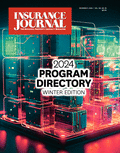When the acclaimed television drama series Homeland climaxed with a devious plot by terrorists to kill America’s vice-president by hacking into his electronic pacemaker, critics mocked the ludicrousness of the idea deeming it as simply far-fetched fiction. However, the storyline was thought of as credible by those in the know within the world of computer security. Among those was the New Zealand-born computer ethical hacker, Barnaby Jack.
It was recently concluded that an accidental drug overdose caused Jack’s untimely death. Jack, who was famed for demonstrating cash machine hacks live on stage in Las Vegas and later highlighted the insecurity of smart medical devices, was found dead at home in San Francisco last July, days before he was due to give a talk on hacking electronic medical implants at the Black Hat conference in Las Vegas. The presentation he was due to give was named, “Hacking Humans.”
The idea of causing bodily harm by hacking an implanted device may have previously been disregarded as implausible — but in 2012 the lines between fiction and reality began to blur when Jack first demonstrated just how easy it is to deliver a deadly pacemaker shock at the BreakPoint conference in Melbourne. Jack believed it was possible to infect the pacemaker companies’ servers with a bug that would spread through their systems like a virus potentially causing mass murder. Another of his stunts was to reveal how a diabetic’s insulin pump — which is designed to deliver insulin to the body day and night — could be hacked from 300 feet away, so it could dispense a fatal dose.
Collision Course
An era of open information in healthcare is now underway. With continuous technological and medical advances in recent years it was inevitable that the two fields would eventually collide.
Now technology has become an intrinsic part of modern medical devices. In particular, implantable medical devices (IMBs) which have in recent years been enhanced with the use of wireless connectivity. Technologies such as long and short range wireless communications, cloud computing and information security are being employed by an ever increasing number of medical devices such as patient monitors capable of communicating data to remote locations, wearable devices including those which regulate and monitor heart rate, as well as online self-diagnostics and medical apps. The introduction of remote access to these types of devices has clearly presented the issue of hacking in a new light.
New World of Risk
Connecting our bodies and DNA to the Internet exposes a whole new world of risk, not only for the user, but for manufacturers, developers, software companies and even back bedroom coders who may be unaware of the consequences of their personal projects.
So, what does this mean for the insurance industry?
The rapidly increasing integration of software and Internet connectivity within medical devices presents a major challenge for product liability insurers, who to date have simply addressed the impact of “tangible” products within medicine. Professional liability insurers for software companies, meanwhile, have focussed almost exclusively on financial loss.
As software and medicine collide, the potential for major gaps in coverage, or inadvertently covered claims, presents a very real risk. Combine that with major jurisdictional differences in product liability law and it becomes clear that the insurance industry has some way to go to in order to keep pace with the innovation of the companies it insures.
As app developers increase their reach into the medical arena and smart devices become increasingly pervasive, the line between medical devices and smart technology become increasingly blurred. This uncertainty presents a serious regulatory risk to everyone involved.
Regulations to Come
The Food and Drug Administration (FDA) is now alive to the issue and is shortly expected to address the topic with a 24-page set of recommendations for regulating this new world of medical and pseudo-medical devices. With the looming threat of game-changing regulation the future is uncertain.
Software developers, medical device manufacturers and back bedroom coders alike expose themselves to unknown risks as they attempt to push the boundaries of modern technology and leverage the power of the Internet to transform the healthcare industry.
As modern medicine experiences a revolution on a scale not seen since the 1900s, the early pioneers are exposing themselves to regulatory uncertainty as well as previously unheard of and unimagined risk.
The insurance industry is one of the most dynamic, reacting and responding to constant changing risk and regulatory landscapes. When it comes to the blurring lines between technology and medicine, it is more important than ever that our industry pools its knowledge. It’s going to require the combined skills of our technology, cyber and healthcare underwriters to address the growing needs of this new generation of Alexander Flemings.
Newman is a director at CFC Underwriting, a specialist lines UK-based underwriting agency backed by a number of Lloyd’s syndicates. CFC Underwriting distributes products through brokers in 16 countries around the world including America, Australia, Canada, and the UK.
Topics Cyber Legislation Tech Market
Was this article valuable?
Here are more articles you may enjoy.


 Troubled New York Taxi Insurer Sues 180 Providers in Huge No-Fault Fraud Case
Troubled New York Taxi Insurer Sues 180 Providers in Huge No-Fault Fraud Case  What’s Not Changing in 2025: Homeowners Outlook, Re Retentions
What’s Not Changing in 2025: Homeowners Outlook, Re Retentions  AM Best Report Cites MGA’s Role in Insurer Insolvencies
AM Best Report Cites MGA’s Role in Insurer Insolvencies  Viewpoint: Strategies for Brokers as M&A Slows and Å˽ðÁ«´«Ã½Ó³» Rates Soften
Viewpoint: Strategies for Brokers as M&A Slows and Å˽ðÁ«´«Ã½Ó³» Rates Soften 

